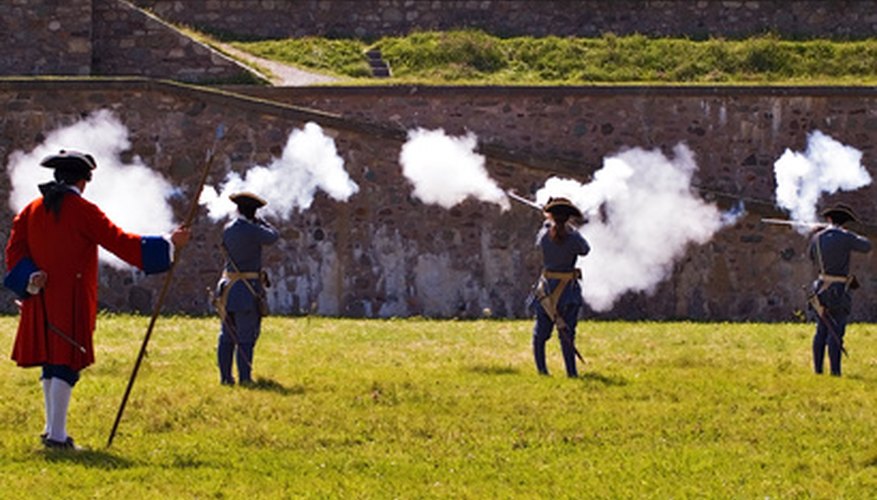Archaeologists and artefact enthusiasts have discovered musket balls on Revolutionary War battlefields from New England to South Carolina. These balls, which were made from molten lead and other alloys like pewter, are analysed for weight, diameter and surface characteristics to determine authenticity. If you find a musket ball that you think is authentic, you can identify it quickly using simple techniques.
Pick up the musket ball with forceps and examine it for a mould seam. Because of the crudeness of some 18th-century moulds, the seam of an authentic musket ball may be slightly offset.
- Archaeologists and artefact enthusiasts have discovered musket balls on Revolutionary War battlefields from New England to South Carolina.
- Pick up the musket ball with forceps and examine it for a mould seam.
Hold the musket ball in the forceps and look for a round, raised bump on the ball. The bump, known as the casting sprue, was made in the inlet channel of the mould.
Examine the ball for a white, lead-oxide patina. Musket balls buried underground for years develop a coating. However, the presence of pine and oak trees in the excavation area can darken the sheen of an authentic musket ball to a deep reddish-brown.
- Examine the ball for a white, lead-oxide patina.
- However, the presence of pine and oak trees in the excavation area can darken the sheen of an authentic musket ball to a deep reddish-brown.
Measure the ball's diameter. 18th-century musket balls range in diameter from 0.39 inches to 0.69 inches. The British Brown Bess musket carried a 0.693 inch diameter ball. American rifles took smaller balls, measuring less than 0.60 inches in diameter but no smaller than 0.39 inches.
Weigh the ball if its shape is not spherical. A fired musket ball may have hit a tree or other object and changed shape. Calculate the ball's diameter with the formula: Diameter in inches = 0.223304 x (Weight in grams) to the power of 1/3. Compare the calculated diameter to the measurements in Step 4.
TIP
Archaeologists have discovered authentic Revolutionary War musket balls that were severely misshapen, some showing human teeth marks. A grey-coloured ball with a blistery surface may by authentic. It means it was moulded in the colonies from a pewter mix when lead was in short supply.
